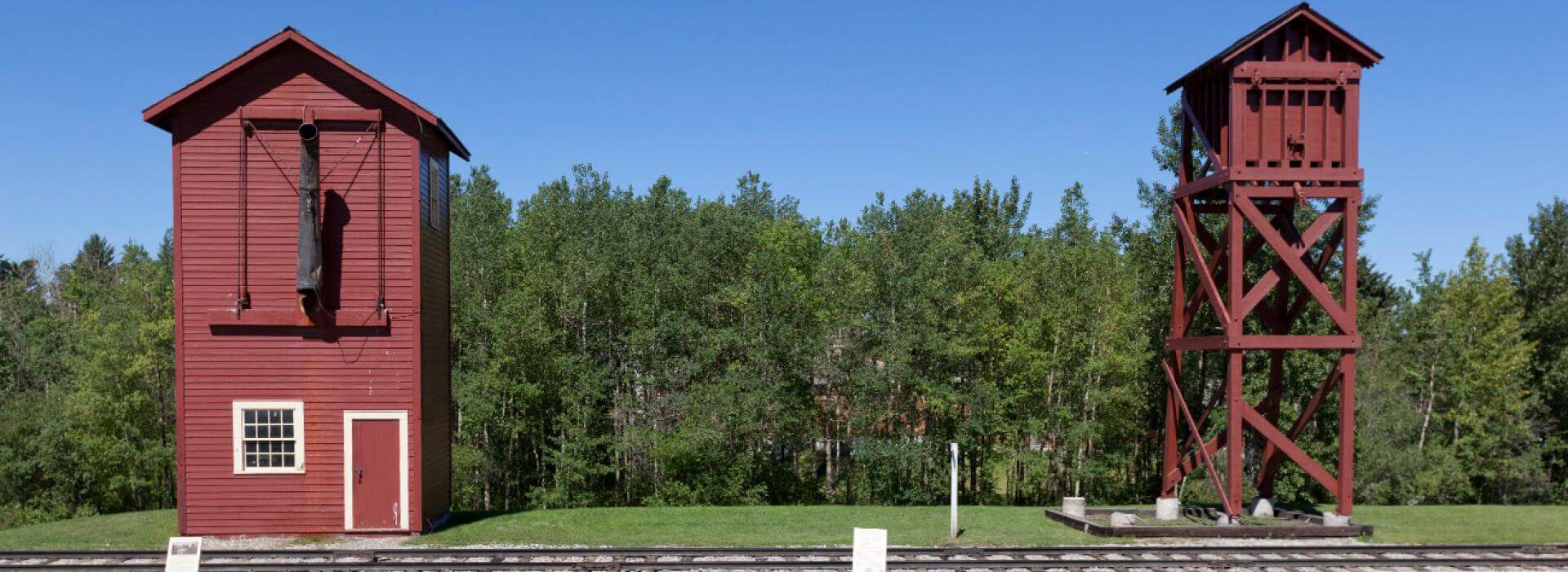Visit Heritage Park
1900 Heritage Dr. S.W. Calgary, Alberta, Canada T2V 2X3
Email: info@heritagepark.ca
Phone: 403.268.8500
Monday
Closed
Tuesday
Closed
Wednesday
Closed
Thursday
Closed
Friday
Closed
Saturday
Closed
Sunday
Closed
The Historical Village is closed for the season, aside from special events. Gasoline Alley Museum and the Railway Café are open year-round!
Building/Museum
Heritage Park’s working locomotives, Nos. 2023 and 2024, each have a water tender capacity of 3,000 gallons. When in use, one of these engines will travel approximately 72 kilometres in a single day on the track at Heritage Park and use between 1,600 and 1,700 gallons of water.
Every morning the engine being used is filled up from this water tower. Heritage Park built this enclosed water tower and tank in 1973 from a 1902 Canadian Pacific Railway plan. Pipes and valves for the tower came from a retired water tank at East Coulee, Alberta, 22 kilometres east of Drumheller.
Steam engines used coal, wood, or oil to heat water in their boilers to produce steam, which was used to drive their pistons. Although some locomotives carried their own water in water tank cars, more often they got water for the boiler from water towers like this one. The capacity of an engine’s water tender varied between 2,000 gallons and 11,000 gallons. Many smaller coal-fired engines had to fill up with water every 50 miles, so the CPR installed water tanks at every other siding. Sidings were small train stations approximately 10 miles apart. The capacity of water tanks varied between 4,000 and 40,000 gallons, depending on how frequently trains filled up at that particular tank. Since locomotives used so much water, a reliable source of water for the water tank was an important factor when the CPR decided which settlements got a siding.
Some water tanks stood on trestles. Others sat on the ground or were enclosed in a tower, like this one. Although some towers were rectangular in shape, many were hexagonal or even octagonal. On the top of most water tanks stood a pole with a float-operated sliding ball on it. This mechanism allowed a train’s crew to read how much water was in the tank at a great distance. The tank would be filled by pumping water from a nearby river, or from a well beneath the tank. Prairie well water was typically very hard, and caused scaling in the boilers. This had to be removed with water softeners by workmen at a roundhouse.
Before 1902, the CPR’s water tanks were simply exposed tubs. These had the unfortunate tendency of freezing up in winter. Newer tanks were placed in enclosures and kept from freezing by a small heater tended by the railway section crew.
By the 1920’s, engines with a water capacity of 11,000 gallons came in to service on Canada’s railways. These did not have to fill up with water as frequently as their predecessors did, so many of the smaller water tanks became superfluous. By the 1950’s, Canadian railways were switching to diesel engines, which did not require water. However, instead of being destroyed, many water towers were sold to local communities as domestic water supply facilities

1900 Heritage Dr. S.W. Calgary, Alberta, Canada T2V 2X3
Email: info@heritagepark.ca
Phone: 403.268.8500